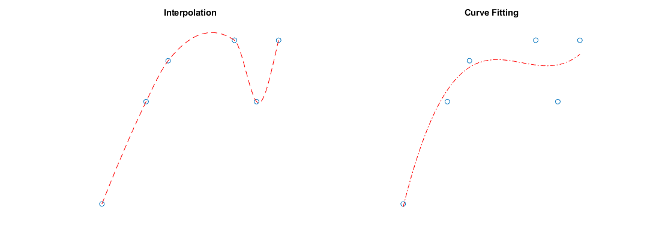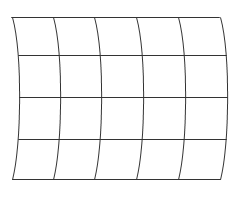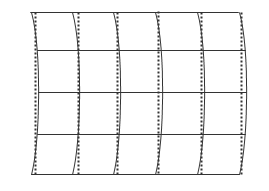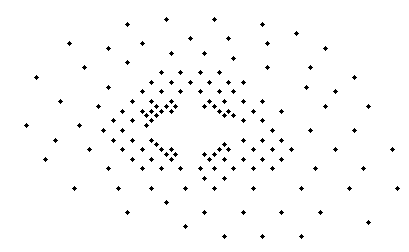网格和散点样本数据
插值是在位于一组样本数据点域中的查询位置进行函数值估算的方法。函数值是根据最接近查询点的样本数据点计算的。MATLAB® 根据样本数据的结构,可以执行两种插值。样本数据可以形成网格,也可以是分散的。
网格化的样本数据使得插值更加高效,因为有组织的数据结构使得 MATLAB 能够轻松找到最靠近查询点的样本数据点。然而,对散点数据进行插值需要数据点的德劳内三角剖分,这就增加了一重计算。因此,如果您的数据可以逼近为一个网格,则与散点插值相比,网格插值可以节省大量的计算时间和内存使用量。
以下主题讨论了两种插值方式:
插值与曲线拟合
MATLAB 中提供的插值方法可创建经过样本数据点的插值函数。也就是说,如果查询一个样本位置的插值函数,会取回精确的样本数据值而不是逼近。对比插值,曲线和曲面拟合算法则不需要通过样本数据点。有关曲线拟合的详细信息,请参阅 Curve Fitting Toolbox。

网格逼近技术
在某些情况下,可能需要数据的逼近网格。例如,网格具有的点可以位于曲线上。如果数据是基于经纬度的,则可能出现这样的数据集:

使用曲线网格,您实际上是处理一组散点数据,并且必须使用计算成本更高的散点插值函数对这些值进行插值。然而,虽然输入数据无法直接网格化,但有时可以在合适的区间用直网格线来逼近曲线网格:

您可以通过创建一组具有适当间距的网格向量来创建逼近网格。用直线逼近曲线网格的优点是可获得基于网格的插值的性能,但代价是数据略微失真。有关创建网格向量的详细信息,请参阅网格表示法。
另请参阅
griddedInterpolant | scatteredInterpolant

